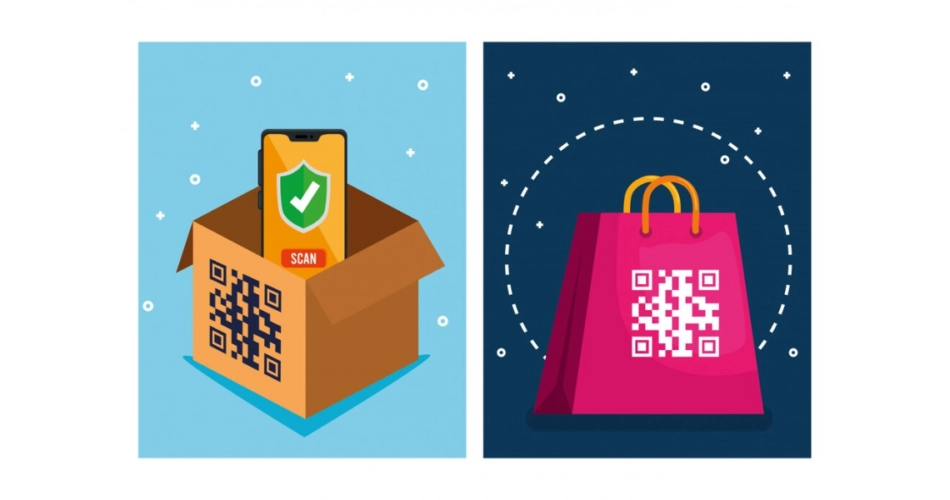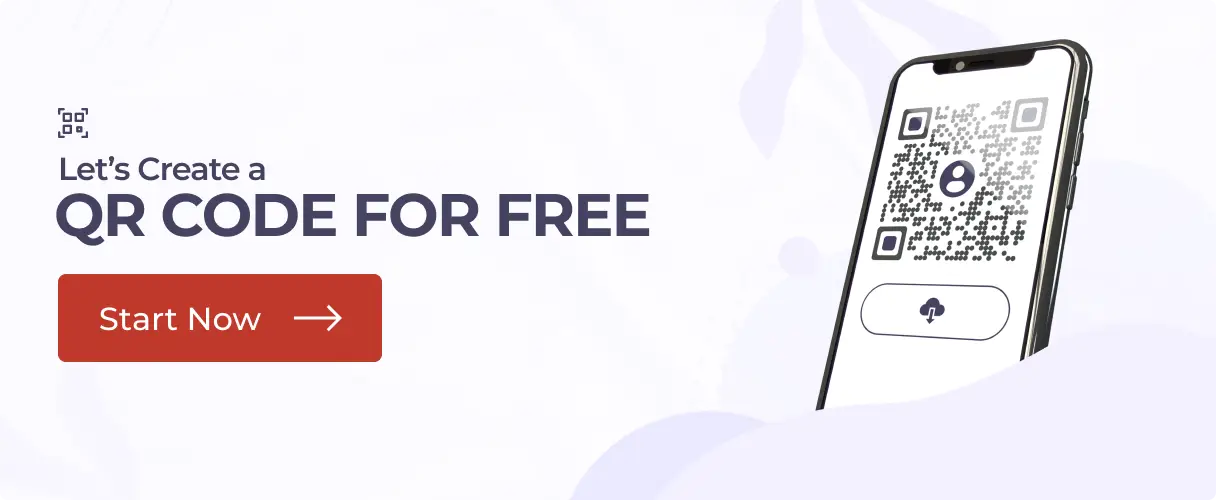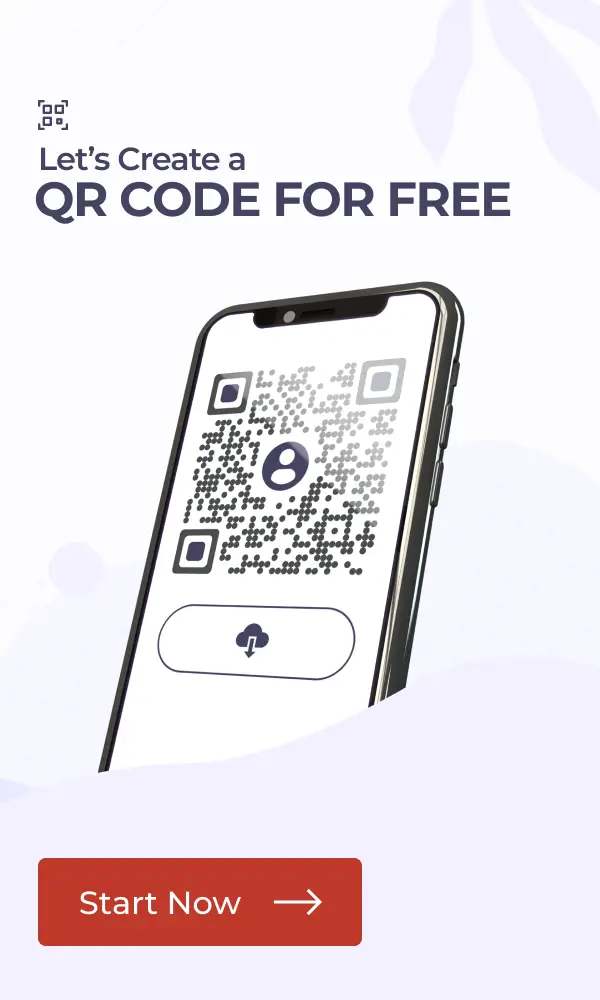Do you think the packaging is only a box? Change your mind.
It becomes an interactive experience with a QR Code, instantly connecting clients to product specifications, how-to videos, and special offers.
Using QR Codes, brands increase sales, engagement, and loyalty for everything from high-end chocolates to sophisticated devices.
You should improve your packing if it isn’t doing its job. Let us dissect QR Code on box.
A. Why use QR Codes on boxes
QR Codes turn packaging into a powerful engagement tool. Customers can interact with your brand directly through an interactive touchpoint rather than a static box.
They are revolutionary for the following reasons:
1. Instant product information
Forget bulky manuals or tiny text. A quick scan gives customers everything—usage instructions, ingredients, or authenticity verification—right on their phones.
2. Boost customer engagement
Drive traffic to your website, social media, or loyalty programs effortlessly. Whether a video tutorial or a discount offer, a QR Code makes it easy.
3. Sustainability & cost savings
Ditch printed inserts and reduce waste. QR Codes let you update digital content anytime, cutting printing costs while keeping information fresh.
4. Seamless post-purchase experience
Let customers register warranties, access customer support, or reorder with a single scan. No more searching for lost receipts or manuals.
5. Track & optimize performance
Unlike traditional packaging, QR Codes provide scan data—helping you understand customer behavior, locations, and engagement levels.
In short, QR Codes turn boxes into an innovative marketing tool, keeping customers informed, engaged, and returning for more.
B. How to create QR Codes on boxes
1. Go to Scanova.
2. Choose the type of QR Code you want on the page that loads. Choosing the type of QR Code would depend on what you would like your QR Code to link.
Do you want it to be a URL, image, or interactive video? Scanova leaves it up to you to choose your preferred category by offering many options.
3. Fill in your details. For example, if it were a Website URL QR Code, paste your website and click “Continue.”
4. Then, on the next page, give your QR Code a catchy name or something you can remember it by, and then click “Create QR Code.”
5. You get a preview of your QR Code. Now, this is where magic happens! You can now edit it by choosing “Edit Design.“
6. Click “Edit Design” and let your creativity roam free! You will see all the recommended designs once you click on them. This option lets you change the look of your QR Code.
Let’s check out how to customize your QR Codes according to your use case. Scanova requires you to sign up for a free trial of their paid plans to use customization options. Check out the pricing details here.
I. Add a unique logo for a personal touch
The best way to do this is to include your business or occasion’s logo in the QR Code to reinforce branding.
You can access the “Custom Logo Design” option to upload your logo in PNG, JPG, or JPEG formats.
Do you prefer text? You can create a text-based logo directly.
You can resize your logo, add a stroke for better visibility, or remove data modules for a creative twist.
A branded logo ensures your QR Code connects to your business/aesthetics and builds user trust.
II. Choose colors and patterns that match your theme
Make your QR Code visually appealing by aligning it with your brand’s theme or event colors.
You can use the “Continue Editing” option to adjust the colors of the “Eyes” and data modules.
You can even add gradients for a modern, sleek effect that catches the eye. The “Eyes” tab also allows you to customize patterns, making the QR Code even more attractive.
This feature ensures your QR Code blends seamlessly into your designs, gift cards, or resume.
III. Opt for transparency (optional)
Many users make the QR Code’s background transparent when going for a clean, seamless look.
The “Make Transparent” option in the Background tab allows your QR Code to blend naturally with flyers, posters, or digital screens.
This approach is ideal for creating a polished and professional design.
IV. Explore different shapes and borders
You can go beyond the standard square QR Code to make it unique. Use the “Suggested” or “All” tabs from the Frames option to select shapes and borders that suit your design.
Rounded corners, creative borders, or custom shapes can add flair to your QR Code and attract more scans.
These features make your QR Code a centerpiece of your promotional materials, ensuring it stands out while aligning with your brand identity.
Once you are done with that, follow the next step to download your high-resolution QR Code:
7. Test your QR Code for perfect scans using various devices and scanners before downloading. You would not like this masterpiece lost in the sea!
8. Click that fabulous “Download” button and your personalized QR Code is ready.
9. When you click download, you then get to choose what format you’d like best suited for your needs, say PNG or JPG
10. Click on “Export.” Your QR Code is now ready for use.
C. Industries using box QR Code

Here’s how these brands are using QR Codes to enhance customer experience and engagement:
1. KFC – Finger-lickin’ rewards and engagement
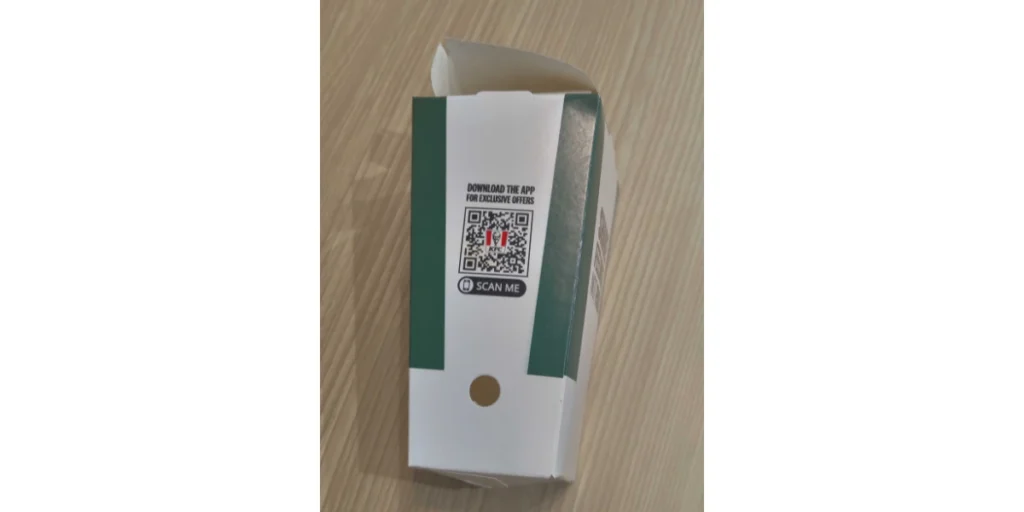
KFC adds QR Codes to packaging and tray liners to offer exclusive deals, loyalty rewards, and menu details. Customers can scan to unlock discounts, participate in contests, or access nutritional information about their favorite chicken buckets.
2. Versace perfumes – Authenticity and brand storytelling
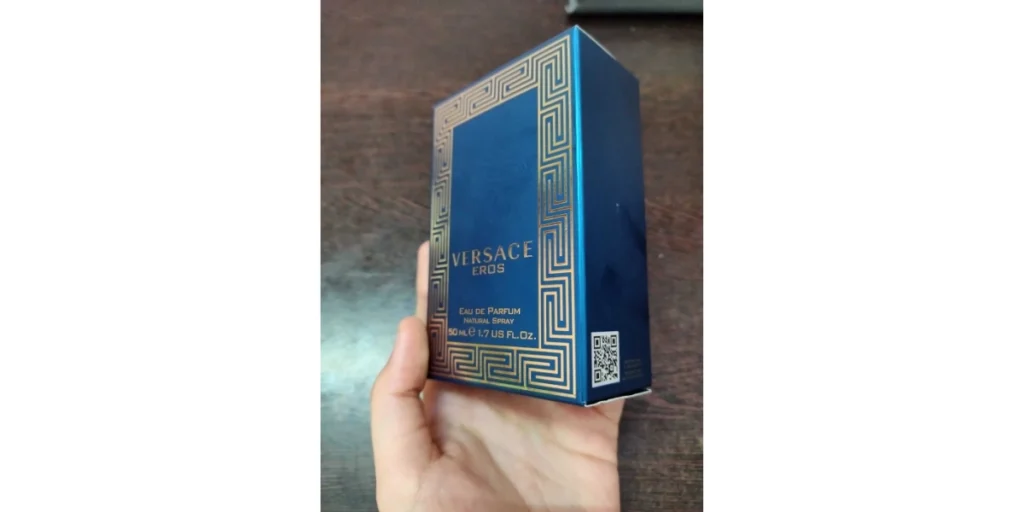
Luxury fragrances like Versace use QR Codes on their perfume boxes to ensure authenticity and prevent counterfeiting. Scanning the code directs customers to the official website to verify the product and explore the fragrance notes, behind-the-scenes craftsmanship, and designer inspirations.
3. Appy Fizz – Interactive campaigns and engagement
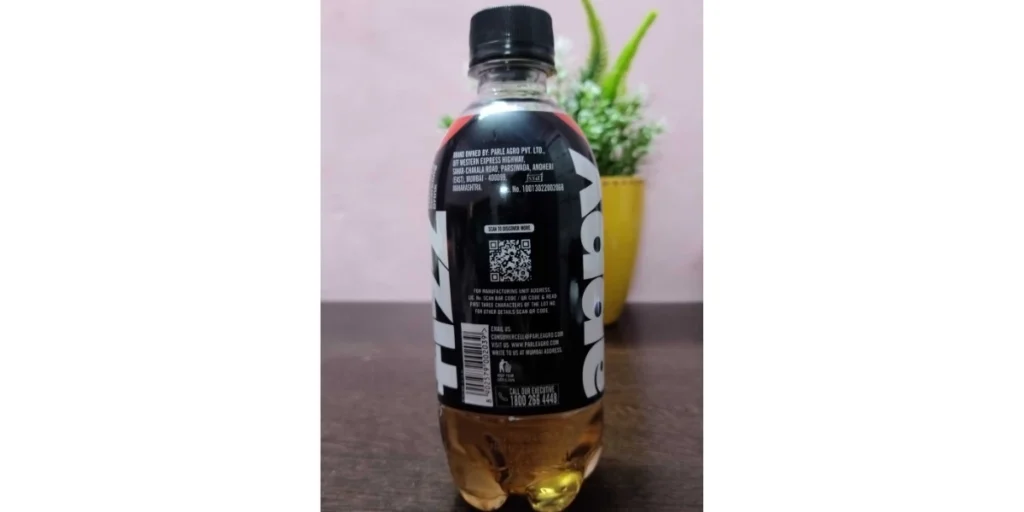
Appy Fizz, known for its fizzy apple-based drink, incorporates QR Codes on bottles and cans for interactive marketing campaigns. Consumers can scan to access promotional videos, AR filters, contests, or limited-time offers, making every sip an engaging experience.
4. JBL earphones – Quick setup and support
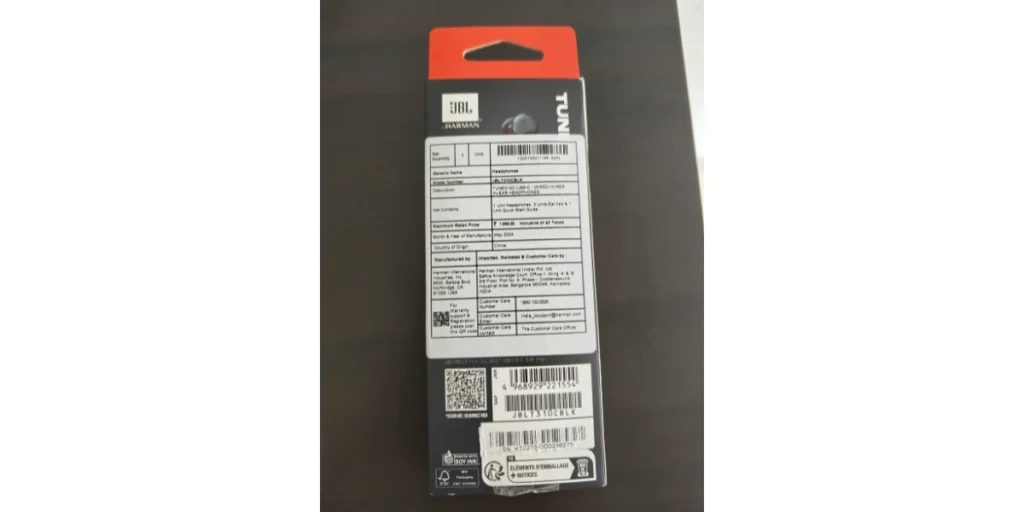
JBL includes QR Codes on earphone boxes to simplify product setup. Scanning the code takes users to an online guide for pairing instructions, firmware updates, and troubleshooting support. There is no need to fumble through manuals—just scan and enjoy immersive sound.
5. Sanfe – Education and product transparency
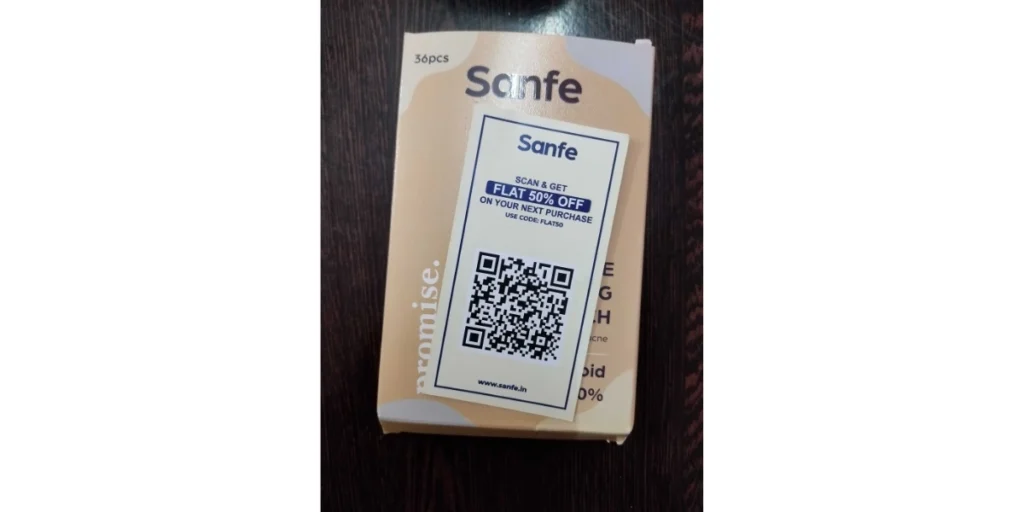
Sanfe, a brand known for feminine hygiene and personal care, integrates QR Codes on its packaging to provide ingredient transparency, sustainability efforts, and usage guides. Users can scan to learn about product benefits, safe usage practices, and exclusive discounts for repeat purchases.
What our customers say about us:
D. Best use cases of QR Codes on boxes

QR Codes on packaging aren’t simply a lovely touch—they’re a direct path to your customers. These little codes do much work across sectors, whether increasing engagement, making information more accessible, or streamlining logistics.
Here are a few of the most effective ways that brands are utilizing them:
1. Instant product information
Nobody wants to squint at the fine print. A QR Code can take customers to user manuals, ingredient lists, or assembly instructions. Apple links them to setup guides, while IKEA provides step-by-step video tutorials for furniture assembly.
2. Authenticity & anti-counterfeiting
Fake goods are a serious issue. Luxury labels like Gucci and Louis Vuitton include QR Codes on their packaging so buyers can quickly confirm authenticity. Pfizer employs them in the pharmaceutical industry to verify a medication’s batch data and place of origin.
3. Loyalty programs & exclusive deals
Want to keep customers coming back? QR Codes can link directly to loyalty programs, contests, or discounts. Coca-Cola has placed them on packaging to unlock special offers, while Nike connects customers to exclusive styling tips and product customization options.
4. Easy reordering & subscriptions
Running out of your favorite product? Scan the box and reorder in seconds. Amazon’s subscribe & save service incorporates QR Codes into its packaging to facilitate recurring purchases.
5. Recycling & sustainability efforts
Customers want to know the correct way to recycle. Companies like P&G and Unilever utilize QR Codes to inform consumers about eco-friendly projects, sustainability efforts, and how to dispose of packaging.
6. Tracking & logistics
QR Codes are used by shipping corporations such as FedEx and DHL to streamline shipment tracking, reduce customer service requests, and enhance delivery transparency.
7. Augmented reality (AR) experiences
Some brands go above and beyond in terms of involvement. While beauty companies like L’Oréal allow customers to scan and virtually test on makeup, LEGO employs QR Codes to bring toys to life with digital animations.
8. Customer support & warranty registration
Nobody enjoys searching through documents for warranty information. Tech titans such as Samsung and Sony incorporate QR Codes into their packaging to allow customers to register items, obtain troubleshooting tips, and instantly contact assistance.
In 2020, McKinsey reported that 55% of US consumers were extremely or very concerned about the environmental impact of product packaging. Source: meyers
E. Design and placement tips for QR Codes on boxes

Only when people scan a QR code on a box does it have any value. It can be simple to overlook if it has poor design, is poorly placed, or has a call-to-action (CTA). Here’s how to ensure that your QR code is noticeable and effective.
1. Size it right
A tiny QR Code won’t scan properly. To make scanning easier, keep it at least **1 x 1 inch (2.5 x 2.5 cm)**. For larger boxes, enlarge it to avoid it becoming lost in the design.
2. Place it where it gets noticed
Hiding your QR Code in a corner or under a flap defeats the purpose. The best spots are:
- Top of the box – Great for promotional scans.
- Side panel – Ideal for product details or instructions.
- Inside the lid – Perfect for loyalty programs or exclusive offers.
3. Tell people why to scan
A QR Code without context is just a square. Add a clear CTA like:
- “Scan to watch a tutorial.”
- “Unlock an exclusive discount”
- “Check product authenticity.”
4. Use colors that stand out
Black and white QR Codes are the safest, but you can match your branding as long as there’s enough contrast. Dark QR Codes on light backgrounds work best—avoid busy patterns that make scanning difficult.
5. Give it breathing room
A QR Code needs blank space around it (at least 4x its module size) to scan correctly. Don’t crowd it with text, logos, or images.
6. Make it part of the packaging design
A QR Code should blend seamlessly into the packaging. Use frames, icons, or creative elements to make it look intentional rather than just slapped on.
7. Test before printing
Before finalizing, print a sample and test it on multiple devices under different lighting conditions. Make sure it works from various angles and distances.
8. Use dynamic QR Codes
A dynamic QR Code lets you update the linked content even after printing. This is revolutionary for measuring engagement, product updates, and promotions without packaging redesign.
There has been increasing adoption of biodegradable packaging materials, with the global biodegradable paper and plastic packaging market predicted to grow at a CAGR of 9.6% in 2023 to 2030. Source: meyers
F. FAQs: QR Code box
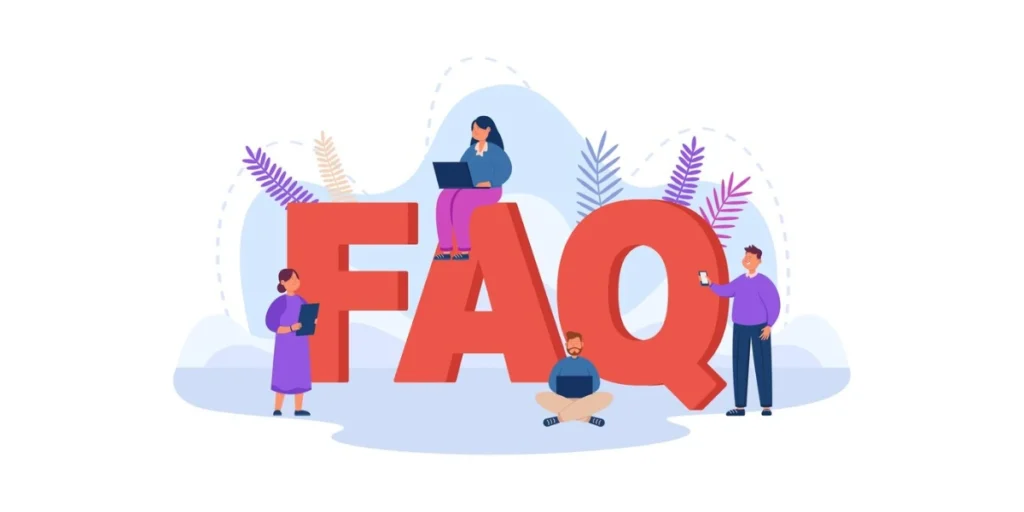
1. Why should I put a QR Code on my packaging?
QR Codes make packaging interactive, helping brands share product details, videos, authentication checks, and exclusive offers. They also improve customer engagement and directly link offline and online experiences.
2. Where should I place the QR Code on the box?
The best spots are:
- Top of the box – For promotions or contests.
- Side panel – This is for product information and instructions.
- Inside the lid – For loyalty programs or special offers.
3. Do I need a call-to-action (CTA) with the QR Code?
Yes! A QR Code without context gets ignored. Add a CTA like:
- “Scan for a how-to video.”
- “Get an exclusive discount”
- “Verify authenticity”
4. Can I use colored QR Codes instead of black and white?
Yes, as long as there’s a strong contrast between the QR Code and the background. Dark codes on a light background work best. Avoid overly bright or cluttered designs that make scanning difficult.
5. Do QR Codes need internet access to work?
Yes, if they link to a website, video, or online content. However, QR Codes can also store offline data, such as text or Wi-Fi credentials.
6. How can I track QR Code scans?
Use dynamic QR Codes, which allow tracking of scans, locations, and device types. This helps measure engagement and optimize marketing strategies.
7. Will QR Codes fade or become unscannable over time?
QR Codes should last if printed correctly on durable materials with proper contrast. However, exposure to moisture, scratches, or low-quality printing can affect scannability.
8. How do I test my QR Code before printing?
Print a sample and scan it using different devices and QR scanner apps—test from multiple angles and distances to ensure reliability.
Brands that trust us:
Summing Up
A box isn’t just packaging—it’s a gateway to engagement. A well-placed QR Code turns it into a tool for information, authentication, and customer loyalty.
But without the right design and call-to-action, it won’t get scanned. Do it right, and your packaging becomes a powerful brand touchpoint.
Ready to make your boxes scannable? Now’s the time.
